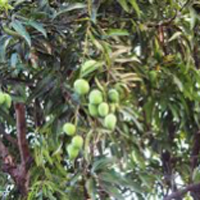Treatment of urinary tract infections with medicinal plants: Monographs of some plants species revealed by traditherapists

Submitted: 28 October 2020
Accepted: 28 November 2020
Published: 30 December 2020
Accepted: 28 November 2020
Abstract Views: 736
PDF: 432
Publisher's note
All claims expressed in this article are solely those of the authors and do not necessarily represent those of their affiliated organizations, or those of the publisher, the editors and the reviewers. Any product that may be evaluated in this article or claim that may be made by its manufacturer is not guaranteed or endorsed by the publisher.
All claims expressed in this article are solely those of the authors and do not necessarily represent those of their affiliated organizations, or those of the publisher, the editors and the reviewers. Any product that may be evaluated in this article or claim that may be made by its manufacturer is not guaranteed or endorsed by the publisher.
Similar Articles
- Bernard K. Turkson, Desmond Nkrumah, Reinhard Isaac Nketia, Alfred Ofori Agyemang, Isaac Kingsley Amponsah, Burnett Tetteh Accam, Merlin L.K. Mensah, Yvonne Boateng, Antimicrobial activity, toxicity and retrospective clinical effectiveness of Kantinka BA and Kantinka Herbaltics, two multi-component-herbal products used in the management of infectious diseases in Ghana , Infectious Diseases and Herbal Medicine: Vol. 5 (2024)
- Mohsen Ghomashlooyan, Fatemeh Namdar, Mehrafarin Fesharaki, Shervin Ghaffari Hosseini, Manizheh Narimani, Zahra Sebghatollahi, Bahareh Basirpour, Seyed Hossein Hejazi, Macrophage supernatant infected with Leishmania major mediates the cytology of fibroblast cells in skin wounds , Infectious Diseases and Herbal Medicine: Vol. 1 (2020)
- Siukan Law, Licorice and its applications for SARS-CoV-2 , Infectious Diseases and Herbal Medicine: Vol. 3 (2022)
- Ghazal Rahimzadeh, Abdullatif Tay, Joe Mac Regenstein, Asad Rokhzadi, Hossein Dabiri, Evaluation of microbial and sensory properties of flavored yogurt drink produced by Noaea mucronata and liquid smoke treatment , Infectious Diseases and Herbal Medicine: Vol. 1 (2020)
- Shah Mohammad Abbas Waseem, Syed Haider Husaini Mehdi, Novel Coronavirus disease (COVID-19): physiology to pathophysiology and therapeutics including herbal medicines , Infectious Diseases and Herbal Medicine: Vol. 4 (2023)
- Shafiul Azam Zishan, Md. Ishtiaque Uddin, Jannatul Naima, Sadab Ibban, Conventional medicines used for kidney protection in Bangladesh: a review , Infectious Diseases and Herbal Medicine: Vol. 4 (2023)
- Faham Khamesipour, Shadan Shojaat, Bahareh Basirpour, Parya Kheiri, Sana-Sadat Afzal, Bahar Chelgerdi, Saeed Nezaratizadeh, Seyed-Hossein Hejazi, Infection status of hydatid cysts in Iran: A review , Infectious Diseases and Herbal Medicine: Vol. 2 (2021)
- Siu Kan Law, Is photodynamic therapy with curcumin suitable for combating monkeypox? , Infectious Diseases and Herbal Medicine: Vol. 4 (2023)
- Harish Gugnani, Dermatophytes, dermatophytosis in the Caribbean and potential for herbal therapy , Infectious Diseases and Herbal Medicine: Vol. 1 (2020)
- Muhammad Awwal Tijjani, Mohammed Garba Magaji, Abdullahi Hamza Yaro, Hamidu Usman, Aishatu Muhammad, Sani Sa'idu Bello, Chinwe Euphemia Egwu, Zainab Mohammed Chellube, Behavioural studies on crude Ethanol leaf extract of Cadaba farinosa Forssk. in mice , Infectious Diseases and Herbal Medicine: Vol. 3 (2022)
You may also start an advanced similarity search for this article.

 https://doi.org/10.4081/idhm.2020.114
https://doi.org/10.4081/idhm.2020.114



